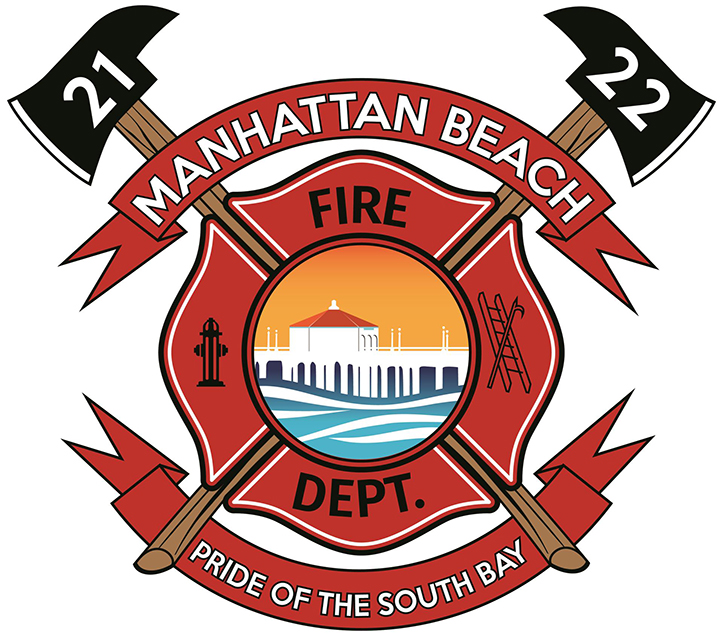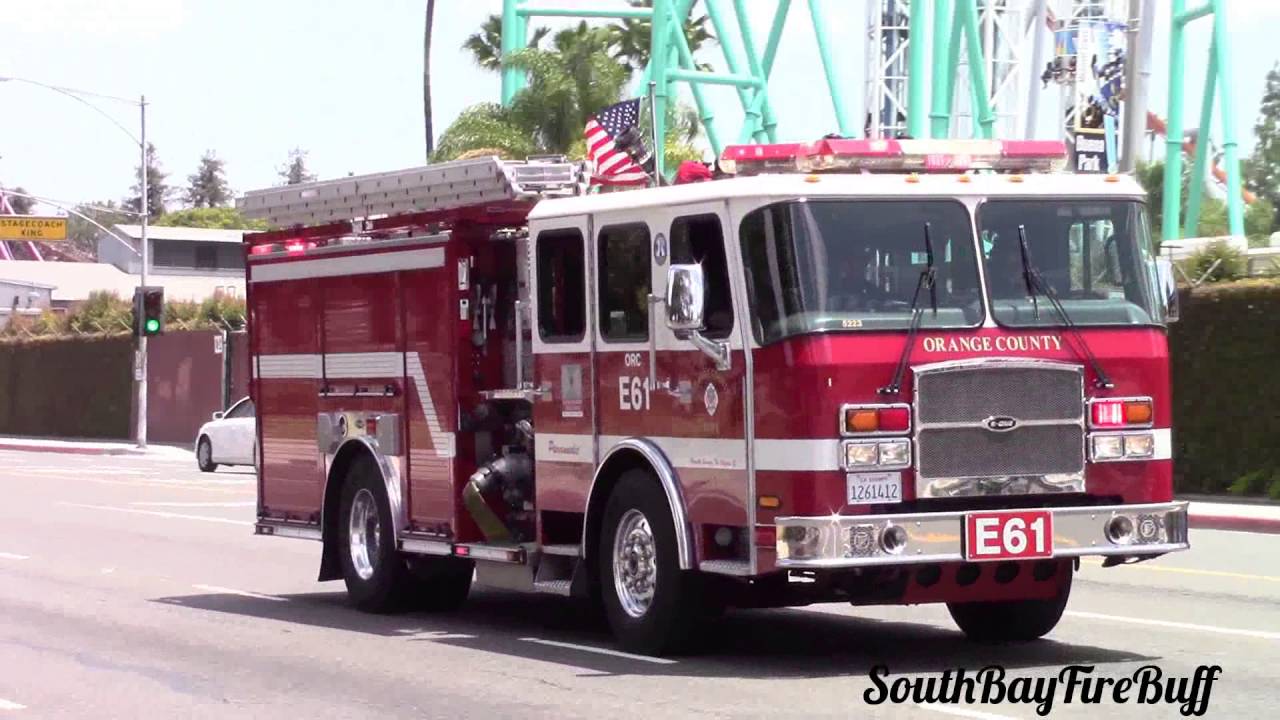
Manhattan Beach Fire Department
Manhattan Beach Firefighter Pay Averages Over $300,000 Per Year
The average total compensation for a full time firefighter in a California city is $207K per year
By Edward Ring, January 21, 2020 2:07 am
There is now a $300,000 club for California’s firefighters. In the City of Manhattan Beach during 2018, the average pay and benefits for a full time firefighter were $300,242. While the Manhattan Beach firefighters, at least through 2018, belong to an exclusive club, twelve California cities pay their firefighters over $250,000 per year, and 69 California cities pay their firefighters over $200,000 per year. Are these levels of firefighter pay appropriate? Are they affordable?
It’s perfectly understandable that nearly everyone, in a perfect world, would not consider any amount of compensation too high for a firefighter, given the work they do. On the other hand, we don’t live in a perfect world. Ordinary Californians face unprecedented financial challenges, nearly all of them caused by public policies that have raised the costs for everything – housing utilities, gasoline, and taxes. It costs twice as much to live in California as it costs to live in most states in America. Why should firefighters in particular, and public employees in general, be exempt from the misery the politicians they elect are inflicting on everyone else?
These policies are the product of California’s long standing one-party regime controlled by oligarchs and public sector unions, buttressed by the politically useful fanaticism of social justice warriors and environmentalist extremists. Just in California, public sector unions collect and spend over $800 million dollars per year, and there is no political special interest, anywhere, that has the slightest interest, much less the ability, to ever seriously challenge them.
One reform minded donor of moderate means, who did not want his name used, speaking about the power of government unions in California’s local politics, had this to say about an election a few years ago in a small California city: “A candidate who I asked to stand up to the unions on issues of compensation and pensions set me straight. He said ‘look, the firefighters union will spend $100,000 dollars to either elect me, or to elect my opponent, and they’ll do it every election. Do you have anyone who is prepared to do that?’”
The answer is of course not. Maybe once in a great while, somewhere, a maverick steps up with a pile of money and supports a reform candidate. Maybe they even acquire a majority on a city council. But like the Eye of Sauron, the unions find and focus their attention on the rebel insurgency, and in the next election, yielding to overwhelming financial might, control passes back to the union friendly candidates.
How to Calculate Average Pay for a Firefighter in a California City
To make the calculations reported here, raw payroll data for California’s cities in 2018 was obtained from the “downloads” page of the California State Controller’s “Government Compensation in California” website. The “2018 City Data” file contains 338,874 individual payroll records for employees of 483 cities. To get at the rate of pay for full-time firefighters, the data was filtered in two ways.
First, individual records for all part-time positions were excluded. This was done by eliminating any records where the base pay reported was less than the amount showing as the minimum rate of pay for that position. This eliminated records where an employee didn’t work a full year either because they were hired, terminated/retired, or transferred before a full year had elapsed. Next, records were eliminated in any case where base pay was less than $30,000 to eliminate part-time workers. Finally, records were eliminated if there was no employer expenditure for the defined benefit pension or for health insurance.
Second, individual records were then screened to only retain those which had the consecutive characters “fire” either as a separate word or as letters within a word (such as “firefighter”) either in the department description, or in the description of the job title.
It is important to emphasize that this methodology necessarily understates the averages that were calculated, for a few reasons. A record reporting base pay in excess of the minimum specified, but less than the maximum, can still be for someone who didn’t work a full year in the position. Similarly, a record reporting pay in excess of $30,000 can still be for a temporary position. And swept into the pool of records when admitting any job where the letters “fire” is within the department or the job title will include most of the fire department administrative personnel whose pay scales are far below and unrepresentative of actual firefighters.
What is the Average Pay for a Firefighter in a California City?
The average total compensation for a full time firefighter in a California city is $207K per year. This consists of $105K in base pay, $40K of overtime, $14K of “other pay” (including “lump sum pay”), for an average total pay before benefits of $159K. Total compensation, as any sole proprietor is viscerally aware, also includes how much your employer shells out for benefits. In the case of firefighters in California’s cities, the cost for the average employer paid benefits added another $49K, with $33K of that being a contribution towards their retirement pension, along with $16K for other benefits, mostly current health insurance.
Shown below, in a table too lengthy to include in the body of this report, are the results for the 201 California cities that directly employ firefighter personnel. But there are a few additional nuances relating to these calculations that are too big to pass over in any serious discussion of firefighter compensation in California.
First, there is the so called UAAL payment, which 28 cities still report (those highlighted in yellow on the chart below), and 173 cities do not. The acronym UAAL stands for “Unfunded Actuarial Accrued Liability.” That is the amount by which the pension system for any given California city is unfunded, i.e., the amount by which the assets invested on behalf of each city in the pension fund are exceeded by the present value of all retirement pension payments they estimate they will eventually have to make.
The UAAL payment, or “catch up” payment, is the amount, per employee, that the city is paying each year to catch up and bring their pension funding status back up to a financially healthy level. This is an abstruse concept, but it has profound financial relevance.
An obvious way to illustrate this relevance, referring to rows two and three in the chart below, is to compare the average pension payment reported by cities that included their UAAL payment, $42K, vs. the amount reported by cities that did not, $24K. Does the UAAL payment belong in a calculation of firefighter compensation? Some would argue it does not, claiming the amount is overstated because it is apportioning a payment only to current employees that ought to also be spread over retirees. Others make the rather strained argument it does not because if the pension fund underestimated how much money they’d need, that should not impact how much we estimate firefighters are earning in any given year.
There are a few ways to reconcile these arguments, none of them perfect. At varying levels of precision, from evaluating every individual actuarial record including that of retirees, to simply picking a number that seems reasonable, you could apportion some percentage of the UAAL payment, but not all of it, to current employee pension benefit payments. Or you could not include any UAAL payment, but add to the normal pension payment that all cities report some additional amount based on a more conservative assessment of how much these pension funds are really going to earn over the next few decades. Both of these methods are valid; neither of them satisfy everyone. But it is reasonable to say that cities that did not include the UAAL payment (such as Manhattan Beach) have understated their firefighter compensation by around $10K per year, and perhaps those who have included the UAAL payment may have overstated their firefighter compensation by about that same amount.
Second, there is the so called OPEB payment, which very few cities make, and even fewer report. OPEB, which stands for “Other Post Employment Benefits,” primarily refers to employer payments for retirement health insurance premiums, which is a common and very lucrative benefit for firefighters. In most cases, OPEB is not pre-funded, that is, unlike pensions which at least in theory are supposed to be 100 percent pre-funded, OPEB payments are made by employers on behalf of their retirees as they are incurred, out of operating budgets, with typically only a small fraction of those payments drawing on pre-funded reserves. In any accurate assessment of total employee compensation, the cost of funding post-retirement health insurance via payments during working years should be included.
Taking all of this into account – the drift of part-time, transitory, and administrative positions into the pool of records to be averaged, along with the underreported cost of the UAAL and OPEB payments, means the true average cost for a full time firefighter in a California city in 2018 was not $207K, but probably closer to $220K. And every budget year, and at every contract renewal, and whenever they’re endorsing candidates or campaigning for new local taxes, they want more.
Exempting Public Servants Means They Will Never Support Reforms
If you don’t have to suffer the consequences of what your politicians are doing, you will be unlikely to call for new policies. Why should it matter if housing is expensive, if you are routinely collecting a pay and benefits package that amounts to $220,000 per year? Why should you feel pressure to pay off your mortgage before you retire, if you will be collecting a pension that is likely to be equal or greater than the pay you received when you were working?
Giving public employees taxpayer funded retirement benefits that differ significantly from what the rest of us receive via Social Security and Medicare creates a conflict of interests between public employees and the citizens they serve. It undermines the value of citizenship itself, by making ordinary private citizens eligible for a package of government benefits that are more comparable to (if not less than) what undocumented immigrants receive, while the far better path to job security, a middle class lifestyle, and retirement security lies with the privileged public sector.
This inherent conflict of interests plays out in countless ways that damage trust in government and undermine faith in American institutions. Why should we control our borders, if membership and dues revenue in the teachers union depends on increasing public school enrollment by any means necessary? Why, for that matter, should immigration laws at least favor newcomers who have job skills and can support themselves, if that would mean fewer unionized employees in public education and elsewhere within the public bureaucracies to provide for the special needs of the illiterate and the destitute? And how, for the record, does it help nations with out-of-control birthrates if a few hundred thousand end up in the public schools of Los Angeles County, when tens of millions are added to their burgeoning populations every year? But it surely does benefit the teachers union.
Which brings us back to California’s firefighters. Why did they march with the United Teachers of Los Angeles one year ago during the teachers strike? Why aren’t informed firefighters letting their union leadership know what an embarrassment this was? How many firefighters have studied the Vergara decision, or looked at data on charter schools?
If firefighters want to have a union and use its unwarranted power – because unions in the public sector elect their own bosses and work for entities that can raise taxes instead of facing competitive business realities – to pay themselves far, far more than they would make in a market based hiring environment, that’s bad enough. But at the least, use some of that political power to work for all the people. Stand up to the fanatical Left in this state.
Fight to lower barriers to building new suburbs on open land, instead of letting the oligarchs and greenies cram everyone into the footprint of existing cities. Fight to build more freeways instead of “light rail” that nobody wants to ride. Fight to restore sensible wildland management practices to prevent future infernos. And fight for school vouchers so we can save a generation of school children, regardless of where they come from and what they bring to the classroom.

- Ringside: What is the Future of California’s Republican Party? - December 31, 2025
- Ringside: CA GOP Just Blew $46 Million for Nothing – Here’s How They Can Avoid Repeating That Mistake in 2026 - December 24, 2025
- Ringside: Will the Delta Pumps Operate at Capacity this Winter? - December 18, 2025





One thing for sure, you will not see a “help wanted” sign for a fireman.
Outstanding and clearly-thought-through summary of the situation.
Way to go Ed!
If anyone wants to do this analysis with UAL included, the Transparent California database does that. It shows UAL for almost all agencies reporting.
[Dislcosure…. I work for Transparent California and am responsible for at least some of the data there…]
It’s great to see a methodical look at pay and total compensation, the assumptions you use are almost exactly what I use in my analysis of school districts…
Thanks for your efforts!
They retire at almost the same amount as their salary. How much longer can this be sustained?
Fight to lower barriers to building new suburbs on open land, instead of letting the oligarchs and greenies cram everyone into the footprint of existing cities.
NOPE
Fight to build more freeways instead of “light rail” that nobody wants to ride.
ARE YOU KIDDING
Fight to restore sensible wildland management practices to prevent future infernos.
MORE LOGGING FORGET IT
And fight for school vouchers so we can save a generation of school children, regardless of where they come from and what they bring to the classroom.
DEFUND PUBLIC EDUCATION NT A CHANCE.
Well hello Paul. It’s always nice to have a teachers union bot to parrot all the tired talking points that are used to brainwash Californians into voting against their own self interests.
Because you’re right, Paul, “NOPE” is the right answer to anyone who thinks maybe we should stop cramming everyone into existing cities like rats in a cage.
And “ARE YOU KIDDING” is an eloquent rebuttal to the idea that roads are more efficient than trains and rails, especially considering how cars are becoming clean and shared, and people living real lives with jobs and children and shopping can’t hop onto the “light rail” for every trip.
And since when, Paul, is “sensible wildland practices” “MORE LOGGING FORGET IT”? Let’s just keep on letting the forests turn into tinderboxes, so people and ecosystems can be killed and destroyed, for what? So ignoramuses like you, Paul, can think they did something good. Heck, even the Native American tribes set controlled burns, as did lightening strikes. But no, let’s suppress all fire, prohibit all logging, no matter how selective and thoughtful, and let fires become cataclysms that we can blame on “climate change.”
As for “DEFUNDING PUBLIC EDUCATION NT A CHANCE,” (watch your spelling, Paul), apparently you support the teachers union talking all the money to pay pensions and to pay lousy teachers who can’t be fired, and apparently you support letting low income communities be the biggest victims of the teachers union, and that’s just ok because supposedly anything that challenges the teachers union monopoly just can’t be good, can it Paul? Knee jerk fanatics like YOU, Paul, are the reason California is turning into a 5h!th0l3, Paul. Flush. Flush. Flush.
You are a puppet and a hack, Paul, empowering a greedy, power-mad gang of thugs engaging in legalized crime and laughing all the way to the bank.